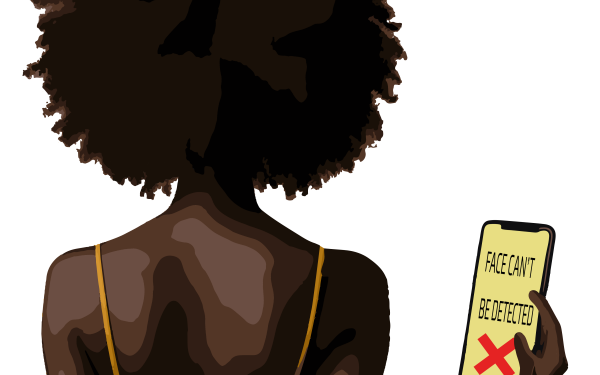Dismantling systemic ableism in health research
There is much talk about labour shortages in Canada these days, but one pool of potential workers remains untapped. A survey in 2017 showed that there were 645,000 potentially employable people in the country between the ages of 25 and 64 – almost as many as the population of Vancouver.
Those are persons with disabilities.
At least one federal funding agency may be setting an example for a change. The Canadian Institutes of Health Research (CIHR) released an accessibility plan in early 2023 to promote the inclusion of persons with disabilities in health research.
The agency’s plan provides optimism for persons with disabilities, who for far too long have been excluded from participating in almost all aspects of health research because of systemic ableism.
What is ableism?
Ableism is defined as social prejudice and discrimination against persons with disabilities. It has historically been closely aligned with the inaccurate theories of eugenics, which classified disability as an unwanted trait to be eliminated from the population.
Contrary to common misconceptions, ableism is more than being impolite or making an offensive comment. It is a problem that can have serious consequences. Apart from openly aggressive behaviour, ableism can harm a person’s well-being in subtle but damaging ways, including but not limited to unnecessarily fixating on disabilities in an attempt to undervalue individuals.
Ableism in academia has been well-documented and theorized via the lived experiences of scholars. The biases in what questions are investigated and how discoveries are reviewed embody the effects of prolonged exclusion of the disability community. Coupled with the inherent issues of academia, such as gatekeeping and steep hierarchies, ableism can create an unsurmountable systemic bias for researchers with disabilities.
Traditional economic measures may not make the price of ableism immediately apparent, if at all. But the “hidden” cost is a cost, nonetheless. Unemployment of a large pool of potential workers is a considerable resource loss for the country and its taxpayers.
Barriers to health researchers
The CIHR’s accessibility plan was developed after the Accessible Canada Act came into force in June 2019. The act aims to create a barrier-free Canada by 2040. It defines a barrier as “anything physical, architectural, technological or attitudinal” that hinders the full and equal participation of people with disabilities.
The CIHR plan grew out of an in-depth review in 2022 of 49 resources – including academic publications, personal blogs and funding practices. The survey revealed that outdated barriers to participation still exist in almost all aspects of health research. Persons with disabilities are exposed to stigma and discrimination, whereas accommodations for them are left as an afterthought.
In the increasingly competitive settings of academia, unregulated workplaces can result in great benefits to an abuser at considerable cost to a person with a disability. Discrimination through repeated indignities and exploiting vulnerabilities through credit-stealing can result in (unearned) job security and career progress for an ableist, but under/unemployment for the victim.
Ableism can also discourage those suffering its effects from seeking protection. Victims’ lived experiences can get minimized by infantilization and invalidated by ridicule.
Policies for protection
The CIHR plan includes measures to dismantle ableism in health research through, for example, mandatory training on accessibility and unconscious bias. This is an important first step in tackling deeply entrenched systemic biases, which need persistent efforts for a meaningful change.
It is worth noting that federal anti-discrimination laws – including sections of the Constitution and the Canadian Human Rights Act – existed to protect persons with disabilities before the Accessible Canada Act.
The great hardship endured by the disability community during the COVID-19 pandemic emphasizes the critical nature of such protections. It merits mentioning that these safeguards extend to foreign workers, too, who make up a considerable fraction of the CIHR’s workforce.
While the accessibility plan offers an extensive evaluation of systemic ableism in health research, it is noticeably limited in the discussion of:
Demographic analysis. A recent Canadian study showed that the type of ableism and satisfactory resolution of harassment depends on the victim's gender.
Safeguards against indirect or unintentional discrimination. Workplaces should consider accommodations an essential responsibility and not charitable dole-outs for which the person with a disability should be forever indebted.
Sanctions against perpetuation. Ableism in a former workplace can potentially follow a victim to a new job. Measures to protect people with disabilities from ableism in future employment are necessary.
Training on reporting abuse. This is crucial as low rates of reporting were observed especially during the pandemic despite high rates of workplace and online harassment.
Exclusion to inclusion
The CIHR’s efforts haven’t received significant media coverage except for a critical commentary that suggested they could be counterproductive. Overall, generating awareness is especially important because pushbacks on progressive policies have occurred. For example, despite reports of systemic biases, there has been repeated opposition to equity, diversity and inclusion in Quebec.
Similar to systemic racism in health research, correcting deeply rooted ableism may need a sustained and collective effort. However, some cost-free measures, such as barring ableist language in workplaces, can be readily taken.
Persons with disabilities want to earn a living using their academic training, much like anyone else. Similar to gender or race, some are born with disability, while others may acquire it later in life through workplace accidents or illness.
No matter the cause, disability does not justify exclusion and stigma. Rather it offers workplaces that choose to be inclusive an opportunity to enrich themselves with novel viewpoints and skills.
This article first appeared on Policy Options and is republished here under a Creative Commons license.https://policyoptions.irpp.org/?republication-pixel=true&post=109278&ga4=G-GR919H3LRJ

_900_506_90.jpg)
_600_832_s.png)



_600_375_90_s_c1.jpg)
